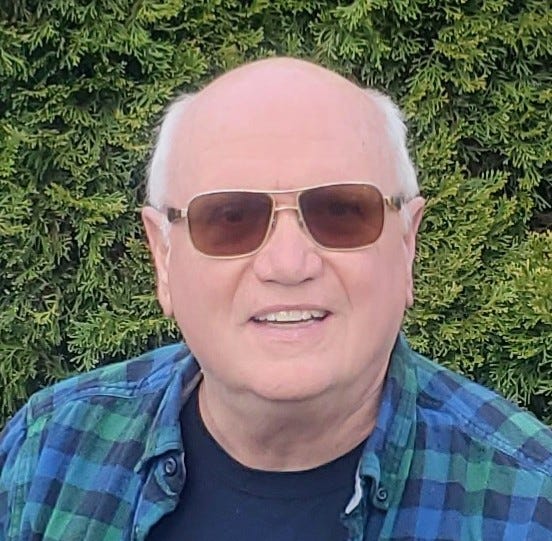Welcome to the gazebo! Take a seat. I’m honored you’re here!
This Week’s Summary:
Onboarding is the first experience a new hire has with your company
Many managers treat it as an afterthought instead of a strategic investment
It can be customized to meet the needs of the person and their intended job
Effective onboarding reduces attrition, increases efficiency and satisfaction
As always, it is about planning your communication from the start
Happy New Year!
Think back to your first day on the job. How did it go? How long did it take you to find the coffee machine? Or figure out how to use the copy machine? Did you even get your company login ID on day one? All of this is before you’ve even started learning how to do the job you were hired for.
For many, the first day goes something like this: you’re shown to a desk, handed an ID card, given access to an online training course, and left with a note saying, “Welcome! Have fun figuring things out! Call me if you have any questions” while forgetting to leave their name or contact info.
Image created by Ed Paulson using ChatGPT. © 2025. All rights reserved.
If you’re lucky, a kind colleague might take pity on you and show you where to find coffee, the bathrooms, and the best parking spots. But for a lot of us, that’s not the case. And this scenario becomes more complicated when the worker is 100% remote.
This week, I want to share a story about one of the best new-hire onboarding experiences I’ve ever had. It also happens to align with the communication methods we’ve been exploring over the past few weeks.
A Case Study in Great Onboarding
In 1986, I started a job as a sales support engineer for a Silicon Valley startup called Telenova. At the time, Telenova was making waves for its advanced data/voice network technology, which integrated seamlessly with computers. This innovation caught the attention of Dr. An Wang of Wang Laboratories, resulting in a major partnership. Wang Laboratories not only bought a significant stake in Telenova but also committed to purchasing a set number of units, along with paying Telenova to train the Wang sales force to sell Telenova’s products.
While I was eager to eventually move into a sales territory of my own, Telenova’s leadership wanted me to prove myself in a support role first. Fair enough—I was excited to be part of this cutting-edge company and confident I’d earn the role I wanted. And I did, BTW, but that is another story.
Enter Henry Wong, the area sales manager I’d be supporting. Henry was (and still is) a sharp, focused leader and he had a clear goal at the time: he needed me up to speed on Telenova’s products—fast. His solution? He turned onboarding into a game.1
The Challenge: Within one week, I’d need to pass a live Q&A session with three of Telenova’s top experts. If I succeeded, Henry promised to treat me to a $500 dinner at the restaurant of my choice. (For context: in 1986, $500 bought a very fancy meal.) Game on.

How It Worked
To start, Henry asked me what resources I’d need to succeed. My list was simple:
Access to technical manuals and application notes.
Time with key personnel who could answer my questions and fill in the gaps.
Henry delivered. He introduced me to a stellar group of colleagues from engineering, manufacturing, application support, and sales who agreed to help. Not only did they answer my questions, but they also turned every hallway encounter and coffee break into an impromptu quiz session.
By the end of the week, I’d learned about:
The theories behind Telenova’s engineering design.
What set our product apart in the marketplace.
Pricing, system configurations, and warranties.
The logistics of bundling, installation, and customer support.
The complex dynamics of our partnership with Wang Laboratories and the salespeople.
The Big Day
When the week was up, I sat down with Henry and three of my newfound mentors for my “product inquisition.” The questions came rapid-fire:
“What’s the price of the station set?”
“How does our non-blocking system architecture compare to competitors?”
“What’s the ideal environment for our product?”
“How does a new sale get entered into the system?”
And so on …
Thirty minutes later, it was over. The verdict? “Passed!” Tadich Grill here we come and it really was wonderful! Thank you, Henry!
Image copyright © by Ed Paulson using ChatGPT and Adobe Photoshop. All rights reserved.
Not only did I earn that fancy dinner, but I also walked away confident and fully prepared to start contributing. The very next day, Henry and I were on a plane to Newport Beach, ready to work with Wang’s sales team. The onboarding process worked!
Why It Worked
Telenova’s onboarding process stood out because it was fast, thorough, and personal. It made me feel valued and supported, which in turn boosted my confidence and engagement.
This experience relied heavily on Level 2/3 and Level 5 richness communication methods (for those following along with our communication series):
Level 2/3 media (like manuals and application notes) helped me quickly absorb foundational knowledge which was a good fit because of my network engineering background.
Level 5 interactions (mentorship and real-time discussions) provided the additional interaction needed to fill in the non-routine information and understand gaps that connected the theory in the manuals to practice. This was the stuff that could not be put into a manual due to its fluid nature and complexity
Note that it wasn’t one or the other … it was both appropriately applied.
The Cost of Skimping on Onboarding
According to the Society for Human Resource Management (SHRM), only 12% of employees feel their company does a great job onboarding, and just 29% of new hires feel prepared to excel in their roles.2
These numbers aren’t just disappointing—they’re expensive. Poor onboarding impacts employee engagement, retention, product quality, and customer satisfaction. A little upfront investment in onboarding can save companies significant costs down the line.
Final Thoughts
The care Telenova put into my onboarding made all the difference—not just in how quickly I ramped up, but in how I felt about the company and my role within it. Avoid throwing people into the deep end just to watch them struggle and become frustrated. Instead, start them in shallower waters and lead them to understand what the deep end looks like in their new job. They want to succeed in their new job and drowning in frustration serves nobody.
What About Your Stories?
What onboarding stories do you have? The good, the bad, or the downright baffling? Hit “Leave a comment” and let me know—I’d love to hear them.
As always, thank you for stopping by. Peace.
P.S. It would be my pleasure to work with you applying these powerful concepts to your particular organization. Drop me an email at author@edpaulson.com or call me at 630.960.3299 USA to set up a time for us to talk in detail about your needs.
If you liked what you read, then click the Subscribe Now button to automatically receive the next edition. I’d love for you to join us! It’s free, by the way.
Don’t miss out on something helpful and/or thought provoking simply because you forgot to visit my site. Automatically receive my management communication success newsletter every Monday to start your week off on a solid note! Your information will never be shared and it will only be used for us to communicate with each other.
BECOME MORE SUCCESSFUL THROUGH BETTER COMMUNICATION
LEARN A LIFETIME OF COMMUNICATION SECRETS BY READING ED’S “GETTING THROUGH” BOOK
Listen to Ed Paulson explain his latest book “Getting Through.”
(Short 3 minute video)
“Getting Through: A Systematic Approach To Being Understood” (ISBN: 9798987950807) is available from Amazon, Barnes and Noble, and other retailers. It is only 130 pages long and can be read in just a few hours. Those few hours will change the way you communicate forever!
Getting Through: A Systematic Approach To Being Understood (ISBN: 9798987950807)
Copyright © 2025 by Ed Paulson. All Rights Reserved.
https://www.linkedin.com/in/wonghenry/
https://www.shrm.org/topics-tools/topics/onboarding









I forgot to mention that Henry is still very active. Check it his link in the footnotes. He is quite a guy.